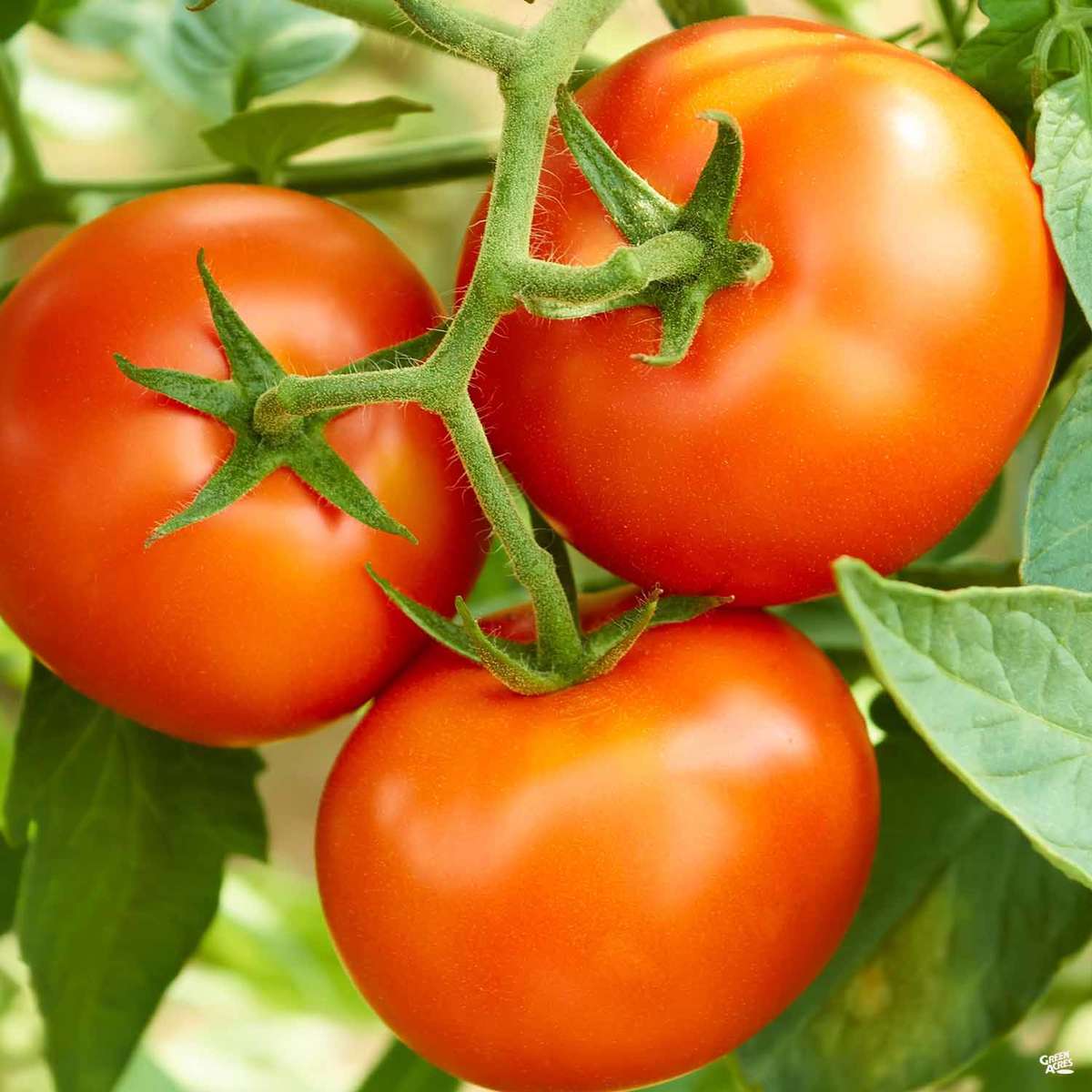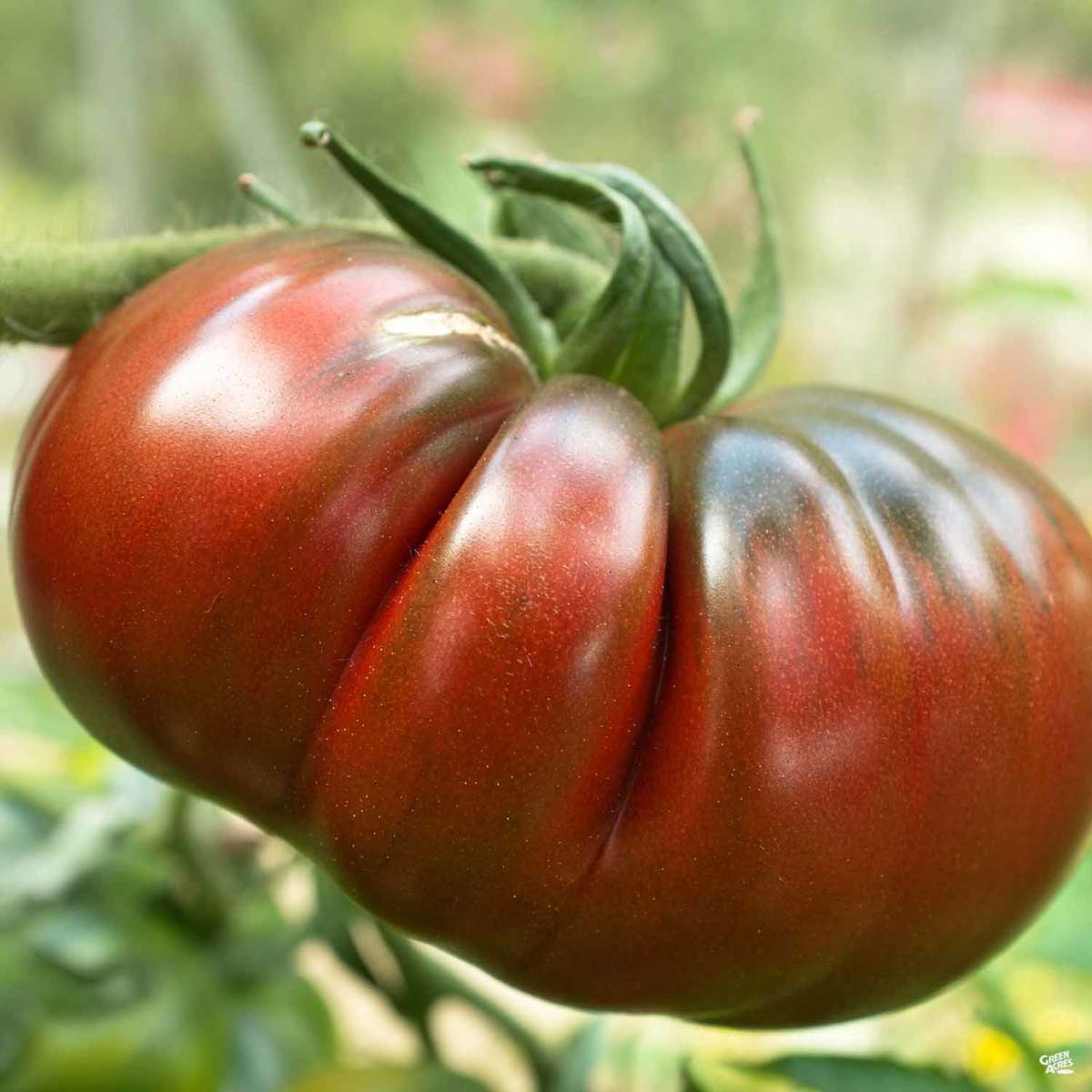
Tomato Planting Guidelines
Let's Talk Tomatoes
The taste of your first homegrown tomato is pretty hard to beat and many edible gardeners look forward to this experience each summer. The good news is that it's officially grow time—time to get veggies in the ground—and our nurseries are fully stocked with plants, quality soil and amendment, organic fertilizer, sturdy cages, and irrigation supplies to get your garden off to a healthy start.
Whether you’re new to edible gardening or more experienced, you may have questions about how to keep your tomato plants thriving and happy. Read on for planting and care guidelines to help you grow a thriving tomato crop in your own back yard this season.
Whether you’re new to edible gardening or more experienced, you may have questions about how to keep your tomato plants thriving and happy. Read on for planting and care guidelines to help you grow a thriving tomato crop in your own back yard this season.
Healthy Soil
Healthy, living soil equals healthy plants. Millions of bacteria, fungi, and insects live in the soil and influence its structure, texture, and fertility. Amending soil with organic matter is essential to help loosen soil, conserve moisture, improve soil aeration, and feed microorganisms. Plus, organic matter helps keep roots hydrated in the summer.
Variety Matters
Select varieties that do well in your area, but don’t be afraid to try something different—you just might discover a new favorite. Also, a diverse garden is often more resilient against pest and disease, and weather conditions. Our nurseries are stocking over 50 varieties of heirloom and hybrid tomato varieties right now, so you're sure to find something tasty to add to your edible garden.
Planting
Dig deep! Remove the bottom quarter of leaves and plant your tomato start all the way up to the first set of leaves. Roots will develop from the buried stem and create a stronger plant.
Healthy, living soil equals healthy plants. Millions of bacteria, fungi, and insects live in the soil and influence its structure, texture, and fertility. Amending soil with organic matter is essential to help loosen soil, conserve moisture, improve soil aeration, and feed microorganisms. Plus, organic matter helps keep roots hydrated in the summer.
Variety Matters
Select varieties that do well in your area, but don’t be afraid to try something different—you just might discover a new favorite. Also, a diverse garden is often more resilient against pest and disease, and weather conditions. Our nurseries are stocking over 50 varieties of heirloom and hybrid tomato varieties right now, so you're sure to find something tasty to add to your edible garden.
Planting
Dig deep! Remove the bottom quarter of leaves and plant your tomato start all the way up to the first set of leaves. Roots will develop from the buried stem and create a stronger plant.
Tomato 'Sun Gold'
A favorite among cherry tomato fans, this bright, golden-orange, bite-sized fruit grows in clusters and stays firm longer than other cherry tomato varieties.
Feeding
Tomatoes are heavy feeders and using an organic fertilizer every four weeks will help prevent blossom end rot and correct acidic soil. Choosing organic encourages good green growth with an equal balance of fruit. In addition, using a one-inch layer of earthworm castings on top of the soil feeds while acting as a mulch, to keep irrigation in longer, while also suppressing weeds.
Watering
Drip irrigation is the best method for tomatoes to deliver water to the soil, and not on the plant itself. Wet plants are prone to disease, and may result in both scalded leaves and fruit in the hot summer sun. As your tomato grows, adjust to longer watering times to reach the deepening roots and let the soil dry out before watering again.
Use the Water–Wait–Dig Method to determine what works best for your situation. Water, wait a short time, and then dig a small hole at the drip line to check if the soil is moist several inches deep, indicating that the water amount is adequate.
Overwatering during harvest can contribute to mealy, mushy tomatoes, as well as splitting and cracking, and blossom end rot.
Tomatoes are heavy feeders and using an organic fertilizer every four weeks will help prevent blossom end rot and correct acidic soil. Choosing organic encourages good green growth with an equal balance of fruit. In addition, using a one-inch layer of earthworm castings on top of the soil feeds while acting as a mulch, to keep irrigation in longer, while also suppressing weeds.
Watering
Drip irrigation is the best method for tomatoes to deliver water to the soil, and not on the plant itself. Wet plants are prone to disease, and may result in both scalded leaves and fruit in the hot summer sun. As your tomato grows, adjust to longer watering times to reach the deepening roots and let the soil dry out before watering again.
Use the Water–Wait–Dig Method to determine what works best for your situation. Water, wait a short time, and then dig a small hole at the drip line to check if the soil is moist several inches deep, indicating that the water amount is adequate.
Overwatering during harvest can contribute to mealy, mushy tomatoes, as well as splitting and cracking, and blossom end rot.
Tomato 'Early Girl'
Gardeners plant this variety so they can have the first ripe tomato in the neighborhood! Reliable and prolific with bright red, medium-sized tomatoes, and a classic tomato flavor.
Provide Support
Tomatoes can grow tall and will benefit from support to keep the plant and fruit off of the ground. We offer a variety of cage sizes to fit the tomato variety you have. Place the cage over the tomato plant while it is young to avoid broken branches.
Pests & Disease
Many tomato hybrids are bred to be disease resistant, and you can look at the tag to find which diseases the variety you are choosing will resist. Look for Fusarium (F), Verticillum wilt (V), (N) for added protection against root nematodes, and (T) for resistance to the tobacco mosaic virus. The most common pest is the tomato hornworm. Look at the plant carefully for missing leaves that are the worm’s trademark. Hand picking, and using B.t. or Spinosad, is excellent organic control that targets the hornworm.
Tomatoes can grow tall and will benefit from support to keep the plant and fruit off of the ground. We offer a variety of cage sizes to fit the tomato variety you have. Place the cage over the tomato plant while it is young to avoid broken branches.
Pests & Disease
Many tomato hybrids are bred to be disease resistant, and you can look at the tag to find which diseases the variety you are choosing will resist. Look for Fusarium (F), Verticillum wilt (V), (N) for added protection against root nematodes, and (T) for resistance to the tobacco mosaic virus. The most common pest is the tomato hornworm. Look at the plant carefully for missing leaves that are the worm’s trademark. Hand picking, and using B.t. or Spinosad, is excellent organic control that targets the hornworm.
Tomato 'Cherokee Purple'
Unique, pink-purple, heirloom tomato has a sweet, smoky flavor and produces 8-12 ounce fruits that are excellent for slicing fresh, stewing, and roasting.



